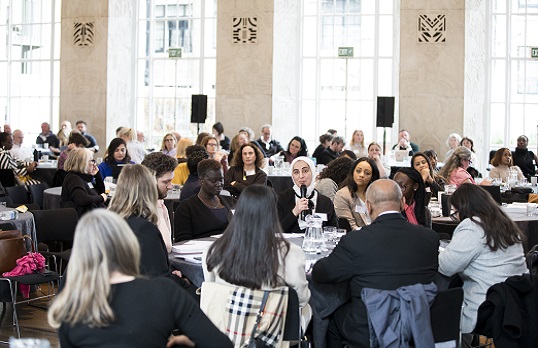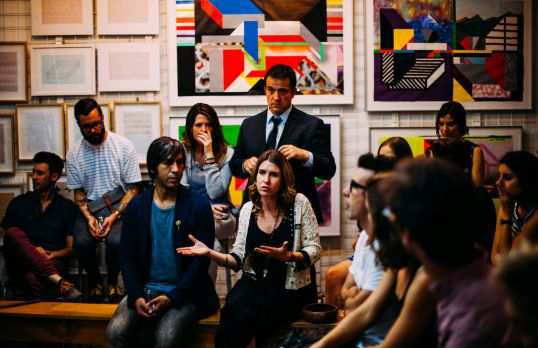The government’s white paper on planning reform favours design codes as a way to ensure greater community involvement in decisions concerning the built environment. But planning for quality development demands a 360-degree approach, and design codes are unlikely to be successful if they are implemented in a vacuum.
This blog post, part of a series published for the Future Place programme, explores the role proactive and involved landowners can play in the long-term stewardship of the built environment. Drawing on the author’s experience as Commissioner on the Building Better Building Beautiful Commission (BBBBC), it discusses the benefits of place stewardship and sets out principles for how it can be applied in practice.
A new focus on design
In ‘Planning for the Future’, the recent white paper on planning reform, the government proposes that local authorities employ a chief of design and placemaking. It isn’t presently clear how these roles will be resourced, but the recognition of the importance of placemaking is welcome and indicates a step towards delivering on a core recommendation of the BBBBC: to shift from an almost exclusive drive for housing numbers towards a qualitative target of delivering great places and regeneration.
To aspire to design quality in development is not a frivolous pursuit. While it must be implemented alongside other measures, design-led development can help usher in a more balanced regional geography of economically vibrant but affordable places, thereby helping to tackle the housing crisis. It is, however, critical that design be conceived in its broadest sense; not simply as visually appealing but also as what is beneficial and healthy for communities and the planet.
As we look to meet the challenges of climate change and biodiversity repair, while building resilient places that can withstand pandemics and extreme weather, it is clearly time to put design thinking centre stage. We must come up with new ways of identifying and implementing innovatively designed places and enforceable design codes have a role to play in delivering on this ambition.
But it also is necessary to assess how we can reconfigure society after COVID-19, and the analytical and design skills found in the built environment sector should play a central role in that process.
Design thinking & liveability
This work need not be developed in a vacuum. Indeed, one of the workstreams of the BBBBC – the Stewardship & Research Working Groups, which I chaired – explored how design thinking can be captured and applied to process as well as place-as-product innovation.
Through the working groups, we interrogated where high-quality outcomes had been achieved as a norm, both historically and on a global basis. Here, the consistent quality and liveability of the early Victorian suburbs of UK cities stood out, just as some New Urbanist developments in the UK and US – and schemes in the Netherlands and Scandinavian countries, which have similar housing markets to the UK – were noted for their quality. These developments were built at volume but nevertheless remain popular today.
How were these outstanding outcomes achieved? Through active stewardship on behalf of the landowner. Our research shows that where land interest remains involved in a stewardship role throughout the duration of a project, the scheme is more likely to demonstrate high-quality design. Crucially, this does not just regard older schemes but is also evidenced in contemporary developments taken forward by some large landowners and public/private partnerships currently taking place in the UK.
A long-term commitment
Stewardship-led schemes benefit from the fact that the lead party remains constant. This ensures a long-term interest in the value created in the built environment but also in the quality of outcomes. Enlightened self-interest is part of the explanation here. But just as importantly, proactive stewardship creates an alignment of interest between the stewardship entity, the local authority and the community. This lowers the risk of adversarial behaviour between the different stakeholders, and resources can instead be deployed to high-quality design and delivery of infrastructure.
We worked together with Knight Frank, the residential and commercial property consultancy, to interrogate the impact stewardship-led development has on values across a range of measures. The research showed that while the cost of long-term placemaking is greater than standard development practice, the values achieved – both on the land and property – compensate for this. Just as importantly, the value premium carries forward to the homeowner whose property tends to perform better in subsequent sales.
The research also showed that a long-term investment approach enables value to be captured within the site. By deferring payment for land, the stewardship approach allows for available investment to be deployed in providing social infrastructure and placemaking to establish the amenity of the location for new residents. It is clear that this place-led approach to development leads to value creation, as opposed to value extraction, over time.
Enforcing design standards
Stewardship entities are empowered through contract to enforce design standards, complementing but not replacing the role of local authority development control. This allows dual controls over land to be implemented. Given the current interest in design codes, it is vital to acknowledge that a code is only effective if there is a shared commitment to enforcement and delivery – otherwise coding risks being renegotiated or stalling the viability of development.
Conversely, a commitment to a long-term stewardship land investment position allows a basis of trust to emerge between the developer, local authority and community. This is something which is valued by developers and property owners as well as other stakeholders. Indeed, the need for a more trust-based development environment has recently been acknowledged in the British Property Federation’s 'Redefining Real Estate' campaign.
Stewardship kitemark
The psychology of stewardship is fairly simple. On one hand, it appeals to the land interest to engage in enlightened self interest – by postponing returns in the short term, more will ultimately be achieved. In parallel, knowing that the developer, or stewardship interest, is a partner in development for the long run, a local authority can be more flexible and require fewer boxes to be ticked: confident that negotiations are in earnest rather than a formality on the way to a land trade.
To help facilitate beneficial behaviour like this, the government should create a ‘kitemark’ to recognise genuine stewardship entities. This could enable schemes to access beneficial funding for patient capital to unlock infrastructure and placemaking. It also is worth exploring whether the kitemark could unlock light touch planning agreements – such as Local Development Orders – for schemes.
Looking ahead to 2021
We formed The Stewardship Initiative during lockdown to take this thinking further. Having identified land interests around the UK willing to take the development of their land forward on a stewardship basis, we now have secured soft commitments from owners representing 165,000 homes.
We’ve also secured institutional buy-in, with the Federation of Master Builders – who recognise how a stewardship-led approach could provide smaller and custom-build developers with access to prime land – having recently joined with us to form a Stewardship Coalition. Together, we will make the case to the government for stewardship-led placemaking.
Coronavirus has shown us the need to develop new ways of framing existing problems. After a challenging year for the sector and wider society, 2021 should be a year for proactive and forward-looking action. Initiatives like the Stewardship Coalition and the Future Place programme demonstrate how the built environment disciplines can develop innovative approaches to deliver better, healthier and more beautiful places across the UK.
We need to continue and expand on this work, setting a new global standard for how to meet the many challenges that flow through the built environment including: climate change, the drive for net-zero emissions, biodiversity repair and economic and social resilience.
About the author
Gail Mayhew was a commissioner on the Building Better, Building Beautiful Commission. She is a co-founder of The Stewardship Initiative and through her consultancy, Smart Growth Associates, is advising on place making in schemes across the East of England.









